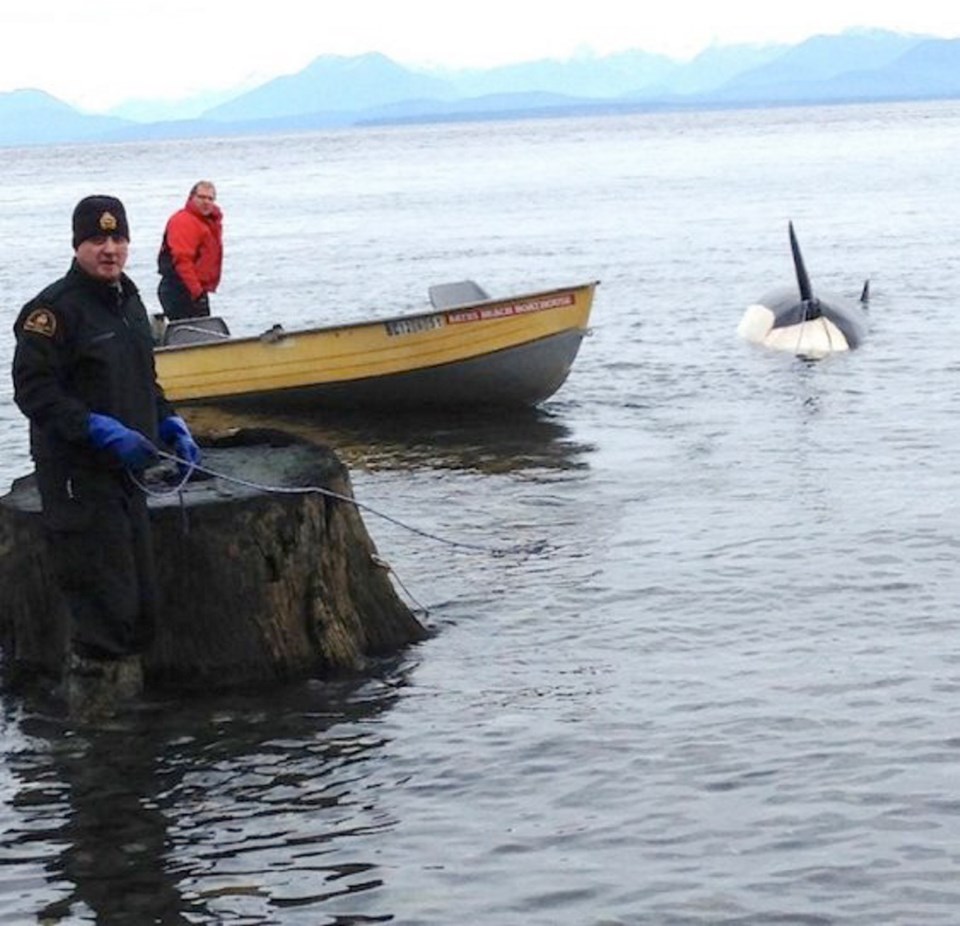The death of a 19-year-old orca off Courtenay is another sign of the grim future that southern resident whales face, scientists say.
The orca, identified as J32, was thought to be in the last stages of pregnancy last summer due to her wide girth, said Ken Balcomb, executive director of the Center For Whale Research in Friday Harbor, Washington.
J32’s body was spotted by Courtenay residents on Thursday.
“Her death doesn’t bode well for the southern resident population and certainly not for that matriline,” Balcomb said. “Her mother died young. Her aunt had two sons and she’s probably post-reproductive. She hasn’t had any babies in the last 12 years. So there’s no future.”
Balcomb travelled to Courtenay, where he hopes to assist at a necropsy being performed today by Dr. Stephen Raverty, a veterinary pathologist with B.C.’s Ministry of Agriculture. “I know what to look for and I know how to find it,” Balcomb said. “I expect we’ll find whatever is the smoking gun for her cause of death.”
Fisheries and Oceans Canada is considering loading the 4,000-kilogram whale onto a boat to perform the necropsy offshore to avoid mess and curious onlookers, Balcomb said.
The scientist said he is curious to discover whether J32 was pregnant. If so, did she die in the process of giving birth or did the fetus die in utero? Tissue samples from the mother and fetus will be compared to see if one died before the other. It will be several weeks before toxicology results are available, Balcomb said.
The death of J32, and presumably her baby, paints a grim future for the southern resident whales that spend time in the waters off Washington state and southern Vancouver Island, Balcomb said. “We haven’t had any survivals in babies for a couple of years. We have had stillborns and newborns die and a number of whales that appear to be pregnant but didn’t ultimately produce any calves. It’s like zero survival in birth rate here.”
Howard Garrett of Orca Network said news of the whale’s death was heartbreaking.
“Our hopes are just so fragile already. There was a calf born in early September that lived less than a month and that was the first calf in two years. The last calf that survived was August 2012,” Garrett said. “There should be two or three births at least per year just to hold steady. We like to see four or five per year. Instead, there have been seven mortalities and no births.”
J32 was probably born in the winter of 1995, Balcomb said. She was first photographed in April 1996. She was last identified and photographed with her family on Nov. 26 east of Victoria.
Only 77 members of the southern resident population remain. A healthy population would be 150 to 200, Garrett said.
The population shrank to 67 in 1971 when about 50 were killed or captured. By 2003, the numbers had rebounded to 83. They have hovered in the mid-80s since.
Studies in Canada and the U.S. have identified a lack of chinook salmon — the preferred food of resident orcas — noise and pollution as major threats.
The U.S. and Canadian governments must pay more attention to the needs of the whales and curtail the harvest of fish to ensure adequate supplies of chinook, Balcomb said. “Maybe this will be the wake-up. We’re losing the whales.”



